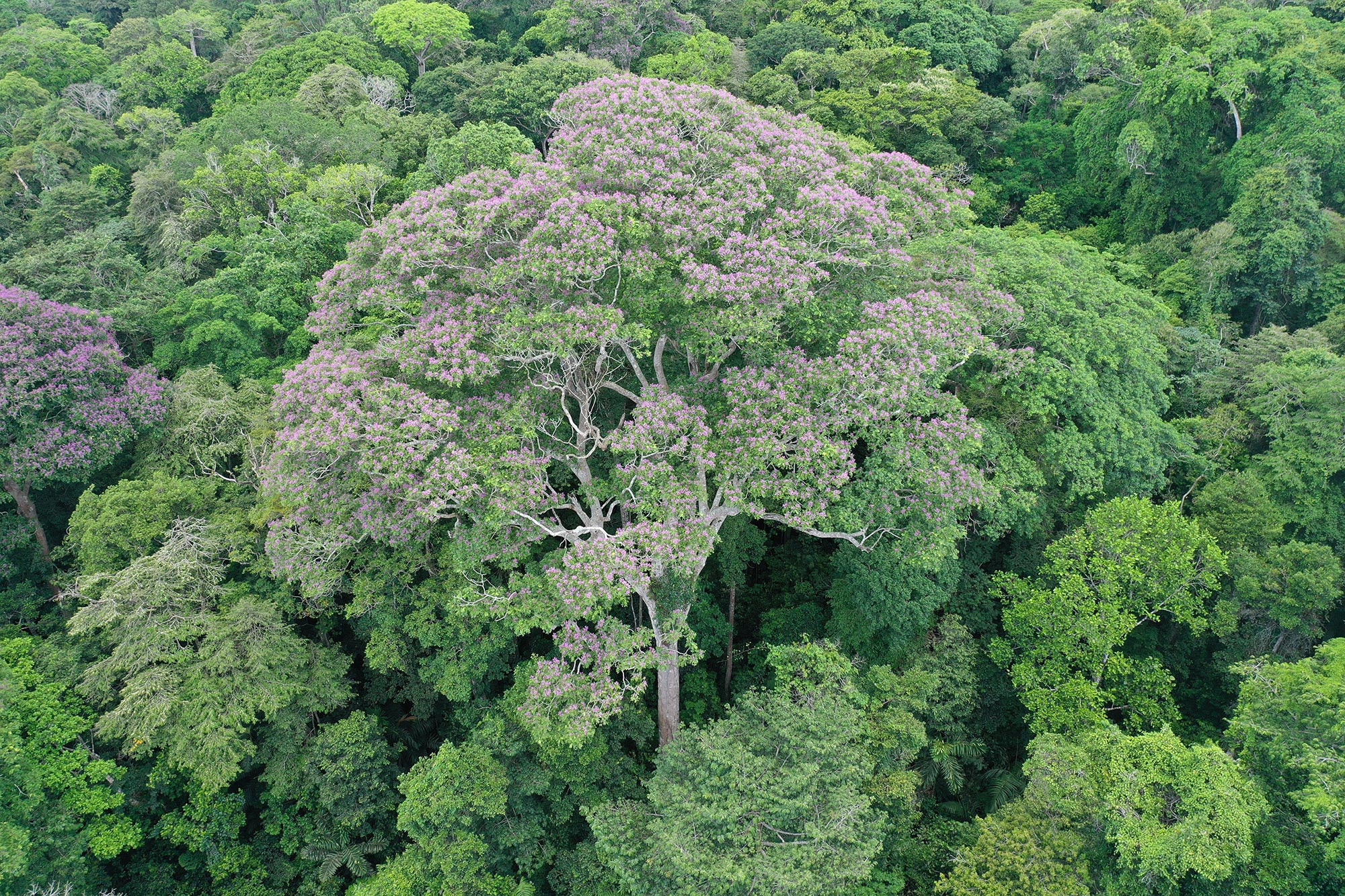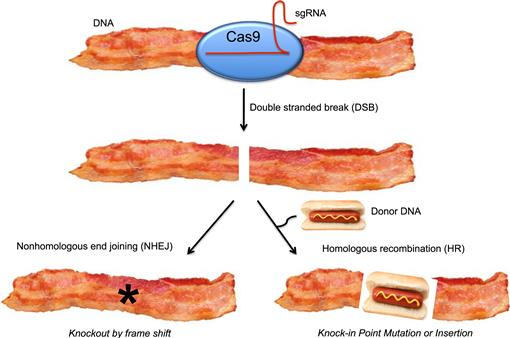Dipteryx oleifera, a magnificent tall tropical tree found in the lush forests of Colombia, Costa Rica, Nicaragua, and Panama, is gaining attention for its remarkable resilience in the face of lightning strikes. Contrary to common wisdom that warns against taking shelter under trees during storms, research indicates that Dipteryx oleifera may actually thrive after being struck, reaping unexpected benefits. This tree not only manages to withstand the effects of lightning but may have evolved to attract it, functioning akin to a natural lightning rod. The phenomenon of lightning tolerance in trees like Dipteryx oleifera highlights an intriguing aspect of tropical tree resilience, suggesting that these natural wonders could play a vital role in their ecosystems amidst increasing storm activity. By enhancing our understanding of such lightning surge trees, we can better appreciate the complex interactions between flora and weather patterns, especially as climate change alters our environmental landscapes.
The tropical tree known as Dipteryx oleifera stands out as a beacon of resilience, showcasing the unexpected advantages of lightning strikes for certain species. Commonly referred to in the context of lightning tolerance trees, D. oleifera’s unique adaptation to survive and even flourish post-strike might redefine our perceptions of tree survival strategies. This fascinating study underscores the benefits of lightning strikes, which can help manage the parasitic loads on these trees while simultaneously decimating their competition. Such insights into the dynamics of lightning rod trees reveal crucial ecological interactions that might become increasingly relevant as we face the realities of climate change and its accompanying weather extremes. Exploring the traits that allow Dipteryx oleifera to emerge unscathed serves as a reminder of the incredible resilience found within our tropical forests.
Understanding Dipteryx Oleifera and Its Lightning Resilience
Dipteryx oleifera, commonly known as the cumaru, is a significant tropical species found in Central America, specifically in Colombia, Costa Rica, Nicaragua, and Panama. This tree is known for its remarkable height and expansive crown, which not only contribute to its aesthetic appeal but also play a vital role in its survival strategies during adverse weather conditions. Researchers have noted that these trees exhibit a unique relationship with lightning, demonstrating impressive resilience against direct strikes. Such features have captured the attention of ecologists who are keen to understand the evolutionary advantages this species possesses.
The survival rate of Dipteryx oleifera trees post-lightning strikes highlights their exceptional resilience. Studies have shown that other tree species suffer higher mortalities and damage from such events, while the cumaru trees emerge relatively unscathed. This resilience can be attributed to their anatomical structure and growth patterns that enable them to withstand the powerful forces of lightning, thus providing essential insights into how tropical tree species can adapt to an increasingly stormy climate.
Benefits of Lightning Strikes for Trees
Recent research has revealed that not only do certain trees survive lightning strikes, but they may actually benefit from these electrifying encounters. For instance, Dipteryx oleifera trees have shown a substantial decrease in parasitic vine infestations, with studies indicating an impressive 78% reduction in vine populations following a lightning strike. This reduction enhances the tree’s access to vital resources, such as sunlight and nutrients, thereby promoting healthier growth. Ecologists are beginning to understand that lightning might fulfill a role akin to a natural pruning method, providing trees with opportunities to thrive better in their ecosystems.
Furthermore, the negative impact on neighboring plants due to lightning strikes indirectly benefits resilient trees like D. oleifera. With neighboring trees suffering higher mortality rates, the cumaru trees face less competition for light and soil resources. This symbiotic relationship illustrates the broader ecological balance where lightning strikes can maintain and even enhance biodiversity by favoring certain resilient species over others, ultimately influencing forest composition and health.
The Role of Lightning Tolerance Trees in Ecosystem Dynamics
The concept of lightning tolerance trees, such as Dipteryx oleifera, plays a crucial role in understanding the dynamics within forest ecosystems. These trees not only survive the immediate effects of lightning strikes but also contribute to ecological resilience. The ability of D. oleifera to thrive despite being struck by lightning suggests a potential evolutionary adaptation, allowing this species to occupy a unique niche within tropical forests. Their survival strategies may offer crucial insights into how trees adapt to climate variations and increased storm frequencies.
Moreover, the presence of lightning-tolerant trees can influence various ecological interactions in the forest, such as species diversity and competition dynamics. As these trees often attract lightning more frequently than their counterparts, they act as natural lightning rods, changing the localized ecosystem by reducing competition from less resilient species. This aspect highlights the intricate relationships within ecosystems and the importance of understanding which species may thrive under changing climate conditions.
Lightning and Tropical Tree Resilience Strategies
Tropical trees, such as Dipteryx oleifera, showcase fascinating resilience strategies that enhance their survival in an environment prone to lightning strikes. One of the critical strategies is their structural composition, which is adapted to endure the electrical surges from lightning. Studies have determined that these trees can not only survive strikes but also leverage the aftermath to improve their condition and reproductive success. This aspect is particularly vital as climate change enhances the frequency and intensity of thunderstorms globally.
Additionally, the resilience of tropical trees often involves complex interactions with other organisms in their habitat. For Dipteryx oleifera, being a lightning strike survivor means fostering a unique environment where parasites and competing flora are diminished. This ecological dynamic not only benefits D. oleifera by allowing it to flourish but also supports the overall health of the forest as a whole, demonstrating how lightning resilience can positively alter ecosystem structure.
The Phenomenon of Lightning Rod Trees
The phenomenon of ‘lightning rod trees’ is an intriguing aspect of forest ecology, where certain species, including Dipteryx oleifera, are observed to have an innate ability to attract lightning strikes. This unique characteristic may suggest that these trees have evolved specific traits that make them more likely to be struck, utilizing lightning as a natural resource for growth and health optimization. Researchers posit that these trees may optimize their physiology to survive bolt impacts that could decimate less resilient species, thereby enhancing their competitive edge in a rich but tumultuous ecosystem.
As lightning rod trees, D. oleifera exemplifies the intricate ways that some tree species may adapt to their environment to harness environmental energy effectively. By attracting lightning, these trees might reduce competition from surrounding species that are less equipped to handle the intense energy release, ultimately fostering an ecosystem where selected trees thrive. This fascinating natural strategy underlines the complexity of tree-interactions and their adaptability to extreme weather patterns.
Impact of Climate Change on Lightning Events
Climate change is significantly altering weather patterns across the globe, leading to an increase in the frequency and intensity of thunderstorms, which in turn heightens the likelihood of lightning strikes. This pattern poses both challenges and opportunities for tree species, particularly those like Dipteryx oleifera, which has demonstrated exceptional resilience in the face of such climatic extremes. As storms become more common, understanding how certain species cope with and even thrive under these conditions becomes increasingly important for biodiversity conservation efforts.
The ecological implications of more frequent lightning events extend throughout the forest ecosystem. Enhanced lightning activity can open up canopies, allowing species like D. oleifera to capitalize on improved sunlight availability. In a changing climate, trees exhibiting lightning tolerance may become keystone species, maintaining ecosystem stability and diversity amidst environmental challenges. Continued research into these dynamics helps elucidate the adaptive mechanisms trees employ to survive and flourish in a progressively stormy world.
Exploring the Interactions Between Trees and Lightning
The interactions between trees and lightning present a captivating area of study in forest ecology. Dipteryx oleifera serves as a perfect example of a species interacting with lightning in a beneficial manner. Rather than merely acting as passive elements struck by thunderbolts, these resilient trees engage in a form of ecological dialogue with their environment. The lightning strikes not only impact D. oleifera directly but also play a critical role in shaping the surrounding ecosystem dynamics.
Through observation, researchers have documented the ways in which lightning interacts with tree populations, revealing that trees like D. oleifera can experience significant ecological advantages post-strike. These benefits range from reduced competition for resources to the enhanced ability to propagate and thrive in their habitat. Analyses of these interactions highlight a more complex relationship between lightning and tree resilience than previously understood, making it a crucial focus of ongoing ecological studies.
Optimizing Environmental Resources After Lightning Strikes
After lightning strikes, certain tree species, particularly those like Dipteryx oleifera, optimize their growth and resource use in response to the damage caused by these intense events. Post-strike, trees benefit from a vast decrease in nearby competition, allowing them immediate access to sunlight and nutrients that were previously contested. In the ecological dance following a lightning strike, D. oleifera demonstrates a remarkable adaptability, seizing the opportunity to enhance its growth trajectory and reproductive success.
Moreover, the death of neighboring vegetation due to lightning impacts further consolidates the resources available to resilient species. This dynamic not only facilitates D. oleifera’s vitality but also fosters biodiversity in a changing environment. The cooperative interplay following a lightning strike is a remarkable example of nature’s resilience, where trees that can withstand and benefit from such events could become integral to sustaining forest ecosystems amid global climate changes.
Future Research Directions on Lightning and Trees
As scientists continue to explore the relationship between lightning events and tree resilience, future research will delve deeper into the adaptive mechanisms of species like Dipteryx oleifera. Investigating how these trees have evolved their traits to survive and even thrive post-strike will be vital in enhancing our understanding of forest ecology. Additionally, research initiatives may focus on the broader implications of lightning on ecosystem health and how different tree species adapt to the changing climate.
Furthermore, interdisciplinary studies may bridge forestry, ecology, and climate science to shed light on the complex roles of lightning in forest ecosystems. Such collaborations could reveal critical insights into forest management practices and conservation strategies that prioritize lightning-tolerant species. As climate change continues to challenge ecological stability worldwide, understanding the interdependence between trees and lightning will be crucial for preserving biodiversity and maintaining healthy ecosystems.
Frequently Asked Questions
What is Dipteryx oleifera and why is it known for lightning tolerance?
Dipteryx oleifera is a tall tropical tree native to Central America, specifically Colombia, Costa Rica, Nicaragua, and Panama. It is recognized for its remarkable lightning tolerance, as research shows it not only survives lightning strikes with minimal damage but may actually benefit from them, potentially having evolved traits to attract lightning.
How do lightning strikes affect Dipteryx oleifera trees in terms of survival and benefits?
Research indicates that Dipteryx oleifera trees thrive post-lightning strikes. They exhibit fewer parasitic vines and experience decreased competition, which allows them to grow taller and access more light and nutrients. This resilience enhances their reproductive success, making them 14 times more likely to produce offspring compared to non-struck trees.
Why might Dipteryx oleifera be considered as one of the lightning rod trees?
Dipteryx oleifera is considered a lightning rod tree because it may have evolved to attract lightning strikes, leading to unique ecological advantages. The tree’s ability to withstand strikes while promoting its growth and reducing competition suggests it has developed adaptations that both attract and benefit from lightning.
What ecological role does Dipteryx oleifera play in relation to lightning and other nearby trees?
Dipteryx oleifera enhances local biodiversity by surviving lightning strikes while causing the death of neighboring trees and reducing vine infections. This dynamic allows it to dominate its environment, further emphasizing the ecological significance of its lightning tolerance and resilience.
How does the survival rate of Dipteryx oleifera compare to other tree species after lightning strikes?
The survival rate of Dipteryx oleifera is significantly higher than that of other tree species after lightning strikes. In studies, all observed D. oleifera trees survived, while other species experienced a mortality rate of 64% within two years. This highlights its superior resilience and adaptive strategies.
What implications does the resilience of Dipteryx oleifera have for climate change and forest biodiversity?
The resilience of Dipteryx oleifera to lightning strikes is crucial in the context of climate change, which may lead to more frequent storms. Its ability to thrive post-strike suggests it could play an important role in maintaining forest biodiversity and stability in changing climatic conditions.
What are potential benefits of being located near Dipteryx oleifera trees for other plant species?
Other plant species near Dipteryx oleifera may benefit indirectly from the tree’s lightning resilience. Reduced vine competition and enhanced access to sunlight due to the D. oleifera’s dominance may create a more favorable growth environment for nearby flora, promoting biodiversity.
| Key Point | Details |
|---|---|
| Lightning Attraction | Dipteryx oleifera may have evolved to attract lightning strikes, gaining benefits from the occurrence. |
| Survival Rate | Nine out of nine D. oleifera trees survived lightning strikes, demonstrating their resilience. |
| Reduction in Vines | Being struck decreased parasitic vine populations on D. oleifera by 78%. |
| Competitive Advantage | D. oleifera trees grow approximately 13 feet taller than neighboring trees, benefitting from reduced vine competition. |
| Increased Offspring Potential | These trees are 14 times more likely to produce offspring due to their resilience to lightning. |
Summary
Dipteryx oleifera, a remarkable tropical tree, demonstrates an intriguing adaptability to lightning strikes. While common advice warns against standing near trees during a storm, this species not only survives such strikes but may actually benefit from them, evolving traits that enhance its survival and reproduction. As researchers continue to explore how Dipteryx oleifera interacts with its environment, the implications of this resilience become critical in understanding biodiversity in the face of climate change.



